Mémoires d'Actuariat
Impact de variations des taux sur l'effet Bow-Wave pour un contrat épargne évalué en VFA sous IFRS 17
Auteur(s) GENNESSEAUX B.
Société KPMG
Année 2024
Confidentiel jusqu'au 12/06/2026
Résumé
IFRS 17 est une norme comptable entrée en vigueur en 2023, remplaçant IFRS 4 et concerne les contrats d’assurance. Elle cherche à harmoniser les normes comptables internationales afin de faciliter les comparaisons avec des acteurs de marchés différents. IFRS 17 introduit de nouveaux modèles d’évaluation en fonction du type de contrat ainsi que la CSM qui représente la valeur du profit attendu et non encore réalisé d’un contrat. En VFA, modèle utilisé pour les contrats d’assurance-vie avec une participation aux bénéfices, la CSM accuse un retard dans son rythme de reconnaissance. Due à une approche dite ”market consistent”, une part des bénéfices est sous-évaluée et est ajoutée progressivement dans la CSM, impliquant une reconnaissance grandissante. Ce phénomène s’appelle le bow-wave Effect car la courbe de reconnaissance de CSM est en forme de vague. Cette conséquence de l’application de la norme IFRS 17 n’est pas mentionnée dans le texte. Il revient donc à chaque assureur de choisir ou d’établir des méthodes pour corriger cet effet. Deux méthodes ressortent principalement sur le marché, la correction court terme ou la correction long terme. Afin de pouvoir mener une étude sur cet effet, ce mémoire construit un modèle ALM dans lequel sont ajoutées les méthodes de correction de l’effet bow-wave. Puis, en appliquant des translations à la courbe zéro coupon, il s’intéresse à l’effet des variations de taux sur l’effet bow-wave et ses corrections
Abstract
IFRS 17 is an accounting standard that has taken effect in 2023, replacing IFRS 4, and concerns insurance contracts. It seeks to harmonize international accounting standards to facilitate comparisons with players in different markets. IFRS 17 introduces new valuation models depending on the type of contract, as well as the CSM, which represents the value of the expected and not yet realized profit of a contract. In VFA, the model used for life insurance contracts with participation in profits, the CSM is lagging behind in its recognition rate. Due to a ”market consistent” approach, a proportion of profits is undervalued and gradually added to the WSC, implying a growing recognition. This phenomenon is called the Bow-Wave Effect, as the CSM recognition curve is wave-shaped. This consequence of applying IFRS 17 is not mentioned in the text. It is therefore up to each insurer to choose or establish methods for correcting this effect. There are two main methods used on the market : short-term correction and long-term correction. In order to study this effect, this thesis constructs an ALM model in which bow-wave correction methods are added. Then, by applying translations to the zero-coupon curve, it looks at the effect of rate variations on the bow-wave effect and its corrections.
Auteur(s) GENNESSEAUX B.
Société KPMG
Année 2024
Confidentiel jusqu'au 12/06/2026
Résumé
IFRS 17 est une norme comptable entrée en vigueur en 2023, remplaçant IFRS 4 et concerne les contrats d’assurance. Elle cherche à harmoniser les normes comptables internationales afin de faciliter les comparaisons avec des acteurs de marchés différents. IFRS 17 introduit de nouveaux modèles d’évaluation en fonction du type de contrat ainsi que la CSM qui représente la valeur du profit attendu et non encore réalisé d’un contrat. En VFA, modèle utilisé pour les contrats d’assurance-vie avec une participation aux bénéfices, la CSM accuse un retard dans son rythme de reconnaissance. Due à une approche dite ”market consistent”, une part des bénéfices est sous-évaluée et est ajoutée progressivement dans la CSM, impliquant une reconnaissance grandissante. Ce phénomène s’appelle le bow-wave Effect car la courbe de reconnaissance de CSM est en forme de vague. Cette conséquence de l’application de la norme IFRS 17 n’est pas mentionnée dans le texte. Il revient donc à chaque assureur de choisir ou d’établir des méthodes pour corriger cet effet. Deux méthodes ressortent principalement sur le marché, la correction court terme ou la correction long terme. Afin de pouvoir mener une étude sur cet effet, ce mémoire construit un modèle ALM dans lequel sont ajoutées les méthodes de correction de l’effet bow-wave. Puis, en appliquant des translations à la courbe zéro coupon, il s’intéresse à l’effet des variations de taux sur l’effet bow-wave et ses corrections
Abstract
IFRS 17 is an accounting standard that has taken effect in 2023, replacing IFRS 4, and concerns insurance contracts. It seeks to harmonize international accounting standards to facilitate comparisons with players in different markets. IFRS 17 introduces new valuation models depending on the type of contract, as well as the CSM, which represents the value of the expected and not yet realized profit of a contract. In VFA, the model used for life insurance contracts with participation in profits, the CSM is lagging behind in its recognition rate. Due to a ”market consistent” approach, a proportion of profits is undervalued and gradually added to the WSC, implying a growing recognition. This phenomenon is called the Bow-Wave Effect, as the CSM recognition curve is wave-shaped. This consequence of applying IFRS 17 is not mentioned in the text. It is therefore up to each insurer to choose or establish methods for correcting this effect. There are two main methods used on the market : short-term correction and long-term correction. In order to study this effect, this thesis constructs an ALM model in which bow-wave correction methods are added. Then, by applying translations to the zero-coupon curve, it looks at the effect of rate variations on the bow-wave effect and its corrections.



